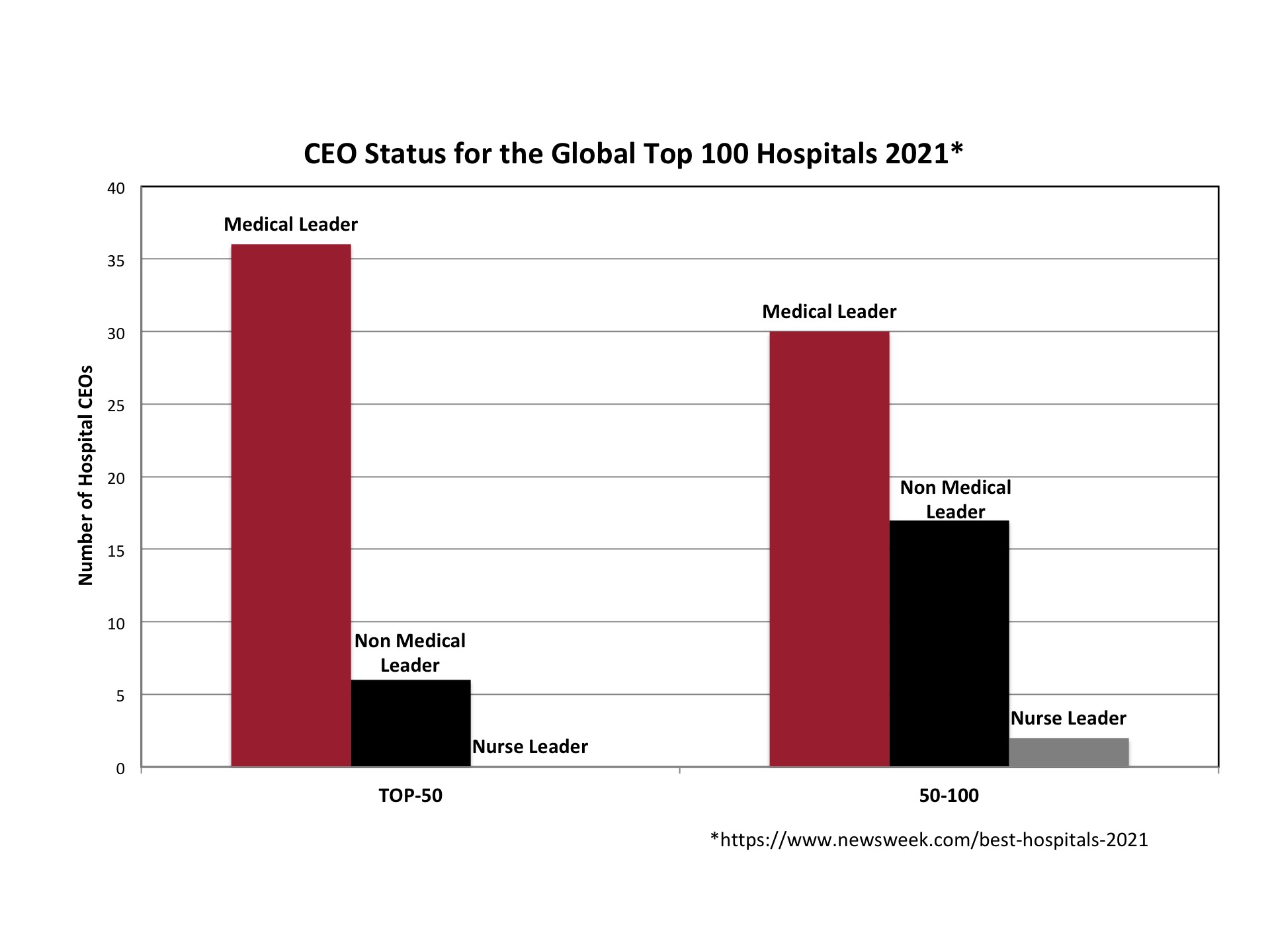We all love to hate rankings. But we also love to use them, whether we are purchasing a hair dryer or health care. Media outlets know this, which is why US news magazine Newsweek launched an annual ranking of the World’s Best Hospitals.
Rankings are problematic for many reasons, but mainly because they create perverse incentives that can skew priorities. Nevertheless, league tables are useful heuristics that give us a snapshot of information – a shallow data pond from which we can dive deeper. In 2009 when one of the authors first dipped her toe into health care leadership, from having first looked at leaders in higher education and sports, the annual Best Hospitals ranking by US News was used. A one-point-in-time correlation (between being physician-led and being a top hospital) may not reveal causation. But causality cannot happen without it.
The 2011 Social Science & Medicine paper, “Physician-Leaders and Hospital Performance: Is There an Association?” sucked its author into medical leadership, and added a bit of data to the advancing discussion about whether doctors should lead our hospitals. Ten years on we are revisiting this question through a new international ranking to examine how many of the top-100 hospitals are led, in 2021, by doctors. We find their numbers have increased.
Two thousand general hospitals are represented in the Newsweek table. They are in 25 different countries, selected according to standard of living/life expectancy, population size, number of hospitals and availability of data. In 2020, 75,000 medical professionals (comprising doctors, nurses, and hospital managers) completed surveys asking them to recommend hospitals (excluding their own place of employment) both within their own country and internationally. The recommendations from these surveys are then weighted by Newsweek at 50% of each hospital’s total score for a national recommendation and 5% of its total score for an international recommendation. Publicly available patient-experience survey data contributed a further 15%. The metrics include general hospital satisfaction, hospital recommendations, satisfaction with medical care, service, and organisation. The final contribution to the score, weighted at 30%, are hospital KPIs (key performance indicators) drawn from publicly available data that include hygiene and patient safety, number of patients per doctor, and quality of care for specific treatments. Finally, the preliminary score for each hospital is validated by a board of experts [1]. The validated scores are then used to establish internal hospital rankings for each of the 25 countries, before international recommendations are interpolated to give the global position.
Who is heading up these outstanding hospitals? Physicians, very largely
Of the 94 hospitals which have identifiable leaders in place, 66 of the top-100 are led by medical doctors (see Figure). Thirty-six of those hospitals are in the top-50, and thirty are in the second 50. Among the top-100 hospitals, there are only seven non-medical managers in the top half of the table and 18 in the second half. Finally, two CEOs are nurse leaders in the second fifty hospitals, and there is one medical pharmacologist in the top-50.

The result established in the 2011 Social Science & Medicine paper has thus been reaffirmed – doctors are more likely to lead hospitals in the top-half of the 100-ranking. Also noticeable, compared with the 2009 US News ranking that was used, is the higher number of doctors in leadership positions. Two-thirds of the German hospitals are led by doctors, as are the South Korean and Japanese hospitals, and 18 of the 22 US hospitals are doctor-led.
There are 54 top hospitals in European countries, 22 in the USA and 4 in Canada; 15 ranked hospitals are in Japan, Singapore and South Korea; two in Australia; two in Brazil and one in Israel. Some countries fare far better, per capita, than others. Germany is well represented with 11 hospitals, eight are in France, and three in Finland with a population of just 5.5 million.
One data point that is slow to change is that men continue to dominate these senior leadership positions, numbering 84.
A correlation cannot establish exactly what is causing what. However, both institutions ranked at 1, Mayo Clinic, and 2, Cleveland Clinic – positions they rarely move from – have been physician-led since their inception 157 years ago and 100 years respectively. Also, importantly, the very best hospitals in the world can choose whomever they like as their CEO. Those elite hospitals choose medical doctors far more often than general managers. That tells us something important.
- Prof. Dr. David Bates (Professor of Medicine, Harvard Medical School, USA); Prof. Dr. Cristoph Meier (Director, Department of Internal Medicine, University Hospital Zürich, Switzerland); Dr. Eyal Zimlichman, MD (CMO, Sheba Medical Centre, Israel); Dr. Gary Kaplan (CEO, Virginia Mason Health System, USA); Prof. Dr. Gregory Katz (Chair of Innovation Management & Value in Public Health, University of Paris Medical School, France); Dr. med. Jens Deerberg-Wittram (CEO, RoMed Kliniken, Germany).

Dr Amanda Goodall
Dr Amanda Goodall is a Reader in Leadership (Associate Professor) at Bayes Business School (formerly Cass). Her research looks at the relationship between leadership, management, and organizational performance. She is the founder and Course Director of the Executive Masters in Medical Leadership designed for doctors. She publishes in academic journals and practitioner publications and is often featured in the media. Amanda’s research is available at www.amandagoodall.com

Toby Houston-Sime
Toby Houston-Sime studied environmental science and has moved into the social sciences. He is a Research Assistant at Bayes Business School (formerly Cass) who works on the relationship between leadership and organisational change, with a particular interest on climate change.
Declaration of interests
We have read and understood the BMJ Group policy on declaration of interests and declare the following interests: none.